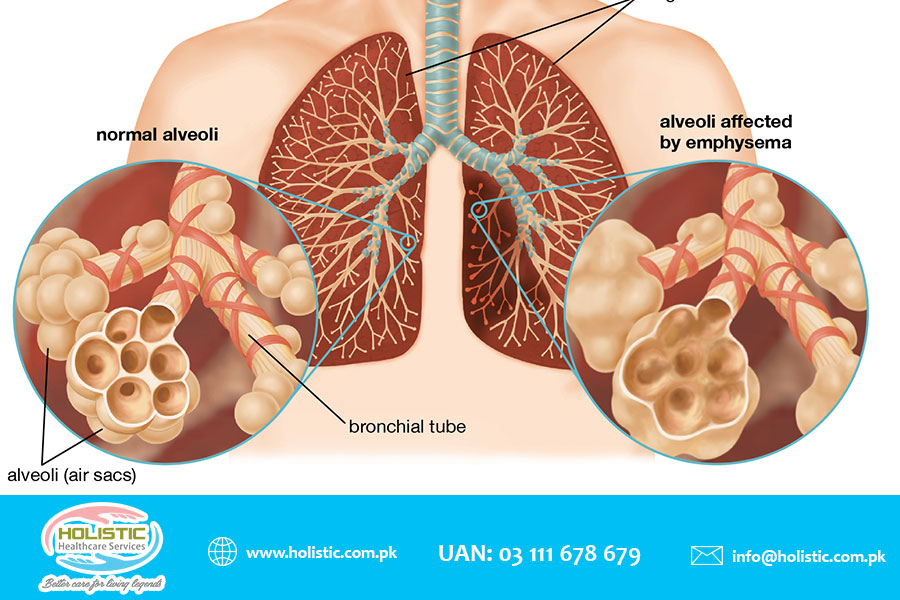Chronic Obstructive Pulmonary Disease (COPD) is a common lung disease. Having COPD makes it hard to breathe. There are two main forms of COPD: Chronic Bronchitis, which involves a long-term cough with mucus and Emphysema, which involves damage to the lungs over time.
COPD is a progressive disease that makes it hard to breathe. Progressive means the disease gets worse over time. COPD can cause coughing that produces large amounts of a slimy substance called mucus, wheezing, shortness of breath, chest tightness, and other symptoms.
Symptoms
Here are 9 early warning signs and symptoms of COPD:
- Increased shortness of breath is a classic early warning symptom
- Coughing more than usual
- Chest tightness
- Feeling anxious
- Fluid retention
- Trouble sleeping
- Feeling cold symptoms
- Sputum changes colors
What is the most common symptom of COPD?
- An ongoing cough or a cough that produces a lot of mucus often called smoker’s cough
- Shortness of breath, especially with physical activity
- Wheezing or a whistling or squeaky sound when you breathe
- Chest tightness
Initial Treatment
- Lung (pulmonary) function tests. Pulmonary function tests measure the amount of air you can inhale and exhale, and if your lungs are delivering enough oxygen to your blood.
- Chest X-ray
- CT scan
- Arterial blood gas analysis
- Laboratory tests
Chronic obstructive pulmonary disease makes it increasingly difficult for a person to breathe. It is not currently possible to cure or reverse the condition completely, but a person can reduce its impact by making some lifestyle changes. Symptoms of COPD may include a nagging cough.
Those with stage 3 or 4 COPD have a life expectancy of 8.5 years or 5.8 years lower. Former smokers lose 0.5 years for smoking, 1.4 additional years for stage 2 COPD and 5.6 additional years for stage 3 or 4 COPD, compared with otherwise similar individuals who do not have lung disease.
The long-acting bronchodilators available today are:
- aclidinium (Tudorza)
- arformoterol (Brovana)
- formoterol (Foradil, Perforomist)
- glycopyrrolate (Seebri Neohaler)
- indacaterol (Arcapta)
- olodaterol (Striverdi Respimat)
- salmeterol (Serevent)
- tiotropium (Spiriva)
COPD is a preventable disease. If a patient does get COPD but stops smoking, they can go into remission. Twenty-five percent of people go into remission if they stop smoking, but it is very hard to stop.
The 5-year life expectancy for people with COPD ranges from 40% to 70%, depending on disease severity. This means that 5 years after diagnosis, 40 to 70 out of 100 people will be alive. For severe COPD, the 2-year survival rate is just 50%.
Patients suffering from COPD often need assistance and they may even need to use a nebulizer or suction machine to help get rid of the built-up mucus in the lungs. The caregivers and nurses at Holistic Healthcare Services have been serving patients in the comfort of their homes. Call us today at UAN: 03 111 678 679 to talk to our healthcare providers.





 Reach us on WhatsApp
Reach us on WhatsApp